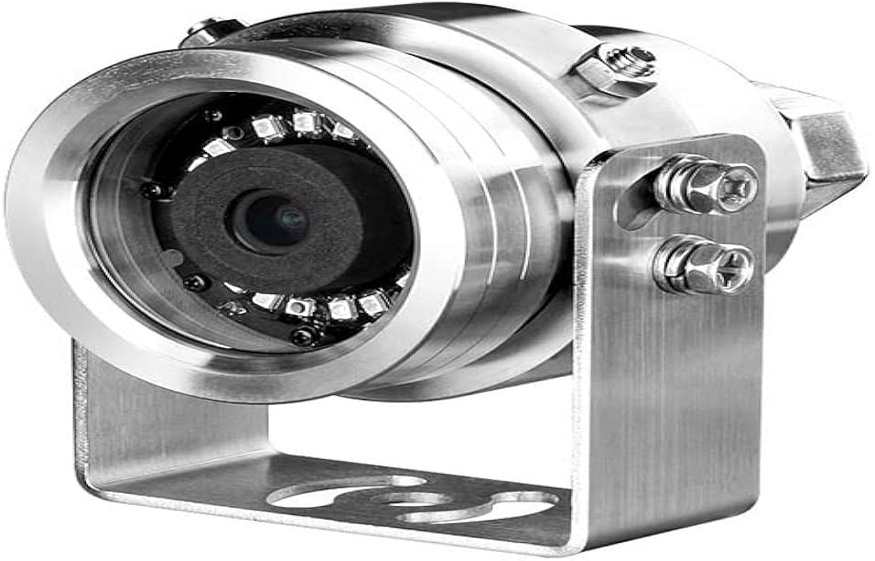Many vital infrastructure locations have sections deemed dangerous because of great explosive risk. Most of these sites’ hazards stem from combustible materials, including liquids, gases, vapors, and dust.Network cameras can greatly enhance the general health and safety posture of a site in these regions through remote monitoring and maintenance, enabling the detection and possible prevention of an explosion before it occurs (or spreads). However, the particular Explosion Proof Camera – Exloc Instruments utilized in such dangerous places must be explosion-protected.
Usually constructed of stainless steel or aluminum, an explosion-protected network camera features a heavy-duty enclosure or camera housing certified for usage in dangerous areas where combustible material may be present. From one convenient site, supervisory control and data acquisition (SCADA) enables simple monitoring of all equipment and processes. Consequently, even in the most dangerous settings, explosion-protected cameras can be installed.
Advantages of Explosion-Protected Cameras in Dangerous Areas
Naturally, dangerous places are ones where people should spend little if any, time, but these regions must stay under 24/7 monitoring in case of an emergency scenario. Because of their adaptability, explosion-protected cameras provide several advantages to promote end-to-end safety from the perimeter to the vital core of a hazardous site. Among these advantages are;
.Remote Monitoring
A network video surveillance system lets operator’s access real-time video from any authorized computer all across the world. In dangerous settings, this is particularly useful since it enables off-site monitoring and maintenance of facilities.
This translates to reduced operational downtime and less time spent inside dangerous areas for service workers. High-quality images from network surveillance cameras let operators evaluate precisely if and when intervention by staff is essential in forensic detail using remote visual monitoring and verification. Anyone working in a hazardous location can also be observed remotely when hands-on maintenance is necessary.
.Video Analytics to Enhance Safety
Apart from the advantages of remote monitoring, today’s explosion-protected network cameras include deep learning capabilities and sophisticated, built-in video analytics able to examine video and sensor input to identify odd activity, patterns, and abnormalities inside the defined region.
Motion analytics can identify who enters and exits a dangerous site or alert when someone attempts to enter a controlled area. Furthermore, sophisticated video analytics can identify smoke or gas and notify the relevant authorities to minimize possible risk before it intensifies. A prime illustration is smoke detection.
Cameras shielded against explosions can be fitted with analysis depending on visual contrast inside the picture, hence eliminating the need for the cameras themselves to touch smoke to identify it.
.Advanced Integration
Among the sensors, alarms, audio, and access control, the network camera offers a great degree of seamless connection with other devices. A multi-layered security strategy lets operators to more safeguard their facilities using this network of linked devices, each with a particular function. Should an anomaly or perhaps hazardous condition be found, the devices can interact and react depending on the current circumstances. For instance, a gas sensor might identify a leak, which would trigger a network chain reaction notifying personnel of the threat, using cameras to identify individuals in the relevant area, and sending an evacuation notice over the audio speakers.
The network can be equipped with heat and thermal sensors to monitor whether equipment temperature crosses a safe level, possibly turning off the unit or lowering its power. Thermal sensors generate images using heat radiation, so imitating conventional cameras but do it differently. Thermal devices allow operators to guarantee processes run smoothly by finding leaking pipes and hazardous temperature levels and taking the required actions.
.Funding End-to-End Critical Infrastructure Security
Explosion-protected cameras’ remote monitoring, video analytics, and sophisticated integration features combined with their heavy-duty construction help to strengthen the end-to-end safety and security of hazardous sites, limit the onsite presence of personnel, and minimize the effect of events that might otherwise prove catastrophic.
Conclusion
Though safety and security are given top importance in dangerous regions, too many companies remain exposed by depending on cameras located outside such areas instead of spending money on explosion-protected gadgets. Though it lowers the degree of information recorded and intelligence gathered, this could lead to short-term savings.
The advantages explosion-protected cameras provide in dangerous regions will keep increasing as their “beyond video” capabilities develop. Their position and influence in the vital infrastructure sector will be crucial to support whole safety and security initiatives.

